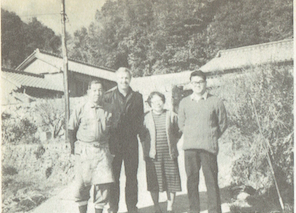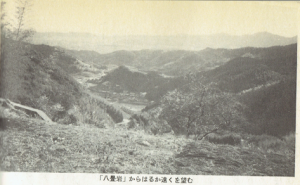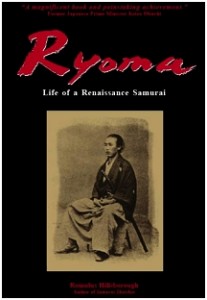
In researching the book, beside Ryoma’s native Kochi I traveled around Japan to the cities and towns where he was most active during the last five years of his life after he fled his native Tosa Han. These include Kyoto, Nagasaki, Kagoshima, Hagi, and the picturesque fishing village of Tomo on the Inland Sea (Hiroshima Prefecture). Among my most memorable experiences was in 1988, about a year or so into writing the book, when I visited the home of the late Masao Tanaka, a direct descendent of a boyhood friend of Ryoma’s, located in Shibamaki, in the mountains northwest of Kochi Castletown.
As I wrote in the Preface:
The house was the same one that Ryoma often visited in his youth, and where he apparently stopped, in need of cash, on the outset of a subversive journey he made in 1861 as the envoy of a revolutionary party leader [Takechi Hanpeita]. “My family lent Ryoma money at that time,” the elderly Mr. Tanaka told me, as we stood atop a giant rock [called “Hachijo-iwa”] behind the house, looking out at the Pacific Ocean far in the distance. Mr. Tanaka informed me that Ryoma liked to sit atop this same rock when he visited the Tanaka family, and where he would indulge in wild talk of one day sailing across the ocean to foreign lands. “Ryoma never repaid the money, so I guess he still owes us,” Mr. Tanaka joked.
[The photo above was taken in front of the Tanaka house with Mr. Tanaka (far left); my Japanese teacher Mrs. Tae Moriyama, a Kochi native; and Mr. Mamoru Matsuoka, biographer of Sakamoto Ryoma, Takechi Hanpeita, Nakaoka Shintaro, and Okada Izo, who took us to the Tanaka residence in his Jeep.]

View from Hachijo-iwa

